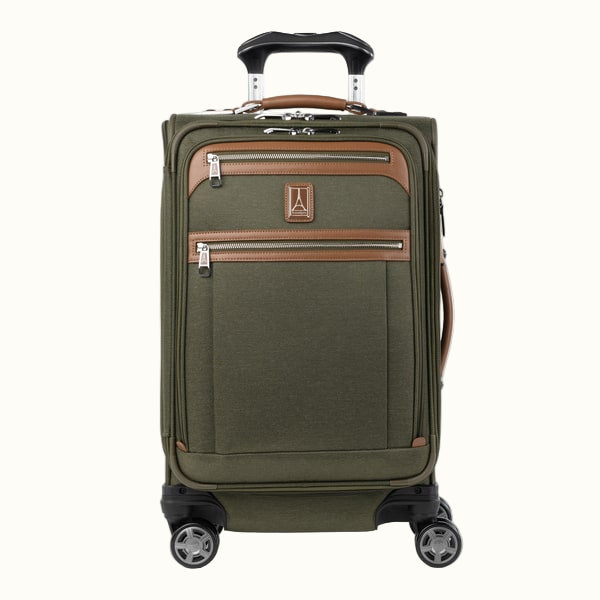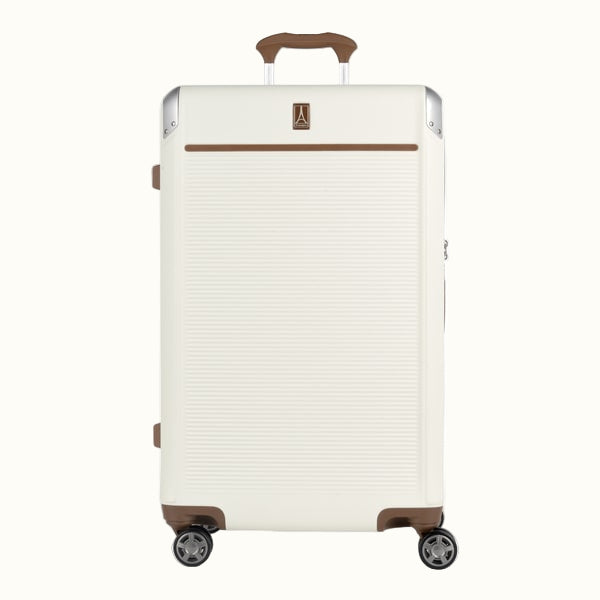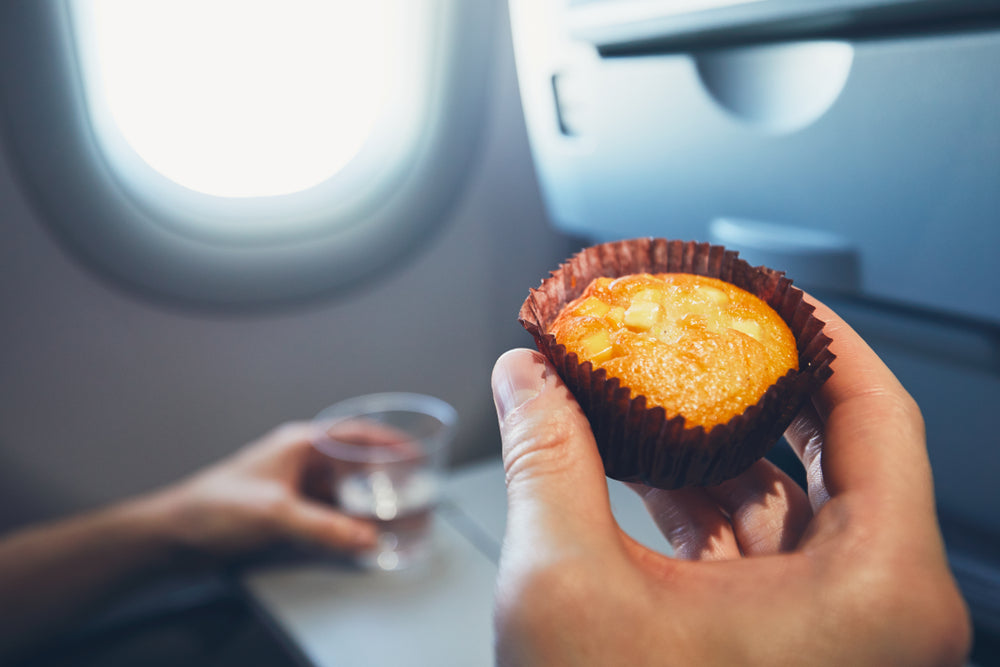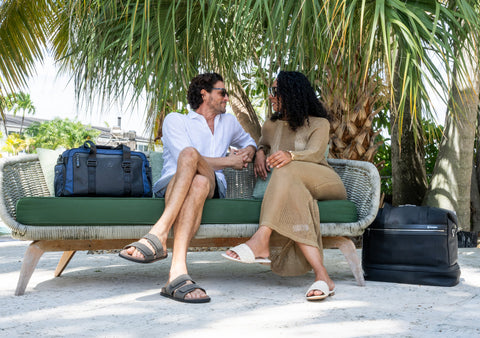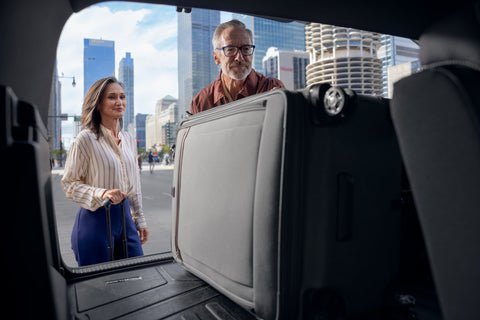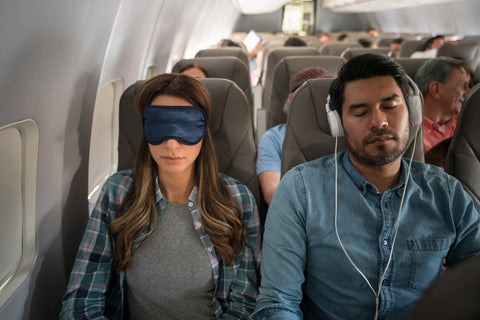The last few months of the year sees a flood of holidays where food plays an important role. Halloween, Thanksgiving, Hanukkah, and Christmas all have their traditional meals (Halloween candy can so be a meal! Not an advisable one, true, but a meal nonetheless). The winter holidays also see a spike in travel — over two million Americans travel by air on Thanksgiving weekend alone.
Given how important food is to holiday gatherings, it’s essential you understand how to bring food on a plane. Can you bring candy bags of candy on a plane at Halloween? What about your famous Thanksgiving macaroni and cheese? Can you bring leftovers through the TSA when you return home after Christmas? What about alcohol? Traveling with food and drinks isn’t difficult. You just have to understand some basic TSA rules concerning food and liquids.
How to bring food on a plane
How to transport food by air depends on whether you transport food items in a carry-on bag or checked luggage. Here’s a breakdown of which foods are suitable for air travel.
Food in a Carry-On
If your food is solid, it can go through TSA checkpoints. Solid food includes bread, hard-boiled eggs, candy, cereal, cookies, chips, sandwiches, pasta, wraps, dried fruit and nuts, most fruits and vegetables, and salads. The final say as to whether a food item can or cannot be carried onto a plane is at the discretion of the inspecting TSA officer, but most solid foods will be approved.
The TSA considers anything which can be spilled, spread, sprayed, pumped, or poured as a liquid. If your food item meets any of these criteria and weighs more than 3.4 ounces, it should travel in a checked bag. Bear this in mind for food items such as creamy cheeses, gravy, dips, packaged salad dressing, and sauces, all of which are considered liquids. On the other hand, salad dressing in a prepared salad is considered a solid food item.
TSA agents tend to check food items carefully, so be prepared for some extra time at the security checkpoint. You can speed up the process by removing food from your carry-on bag and placing it in a separate bin for faster screening.
Frozen food brought onto planes in atote cooler are allowed as carry on. Just remember that gel packs will be considered liquids by the TSA unless the packs are frozen solid).
If you’re traveling with children, you can bring reasonable quantities of formula, breast milk, and juice in your carry-on baggage. Such items need to be removed from bags before screening, and TSA officers may ask if they can be X-rayed or the containers can be opened and inspected. You have the right to refuse these requests, but what happens next is at the discretion of the TSA officer. You may be subject to closer inspection of your carry-on bag or a pat-down. Unless you have strong feelings against X-raying formula, juice, or breast milk, you'll get through security faster if you agree to the request.
The TSA forbids the transport of fresh fruits and vegetables from carry-on and checked luggage when traveling to the US mainland from Hawaii, Puerto Rico, or the US Virgin Islands. This rule prevents the spread of invasive tropical plant pests to the mainland.
Once through TSA checkpoints, you can purchase any beverage or food from the departure area to take onto the plane. While there are no hard-and-fast rules regarding what you can or cannot eat during your flight, it’s considered courteous not to eat anything with strong smells that could disturb other passengers.
Food in checked luggage
Should the TSA deem your food item unacceptable for carry-on, you have two choices. The first is to surrender the item to the TSA agent, who will throw it away. Alternatively, you can leave the security line and check the food bag at the ticketing desk. The bag will need to meet the airline weight limits, and you may have to pay an additional bag fee which may or may not be worth paying, depending on the food or drinks involved. Once the food bag is checked in, return to the security line.
Most foodstuffs can travel in checked luggage, but there are exceptions. If you’re traveling with alcohol, it cannot be stronger than 140 proof, whether packed in carry-on or checked luggage. As we already noted, fresh fruits and vegetables from Hawaii, Puerto Rico, and the US Virgin Islands are on the TSA-banned list, as is cooking spray.
Can I bring leftovers through the TSA?
As long as your leftovers do not violate TSA’s 3-1-1 liquid rules, you can go through TSA with leftovers, so if you want to take some of Gran’s famous turkey stuffing home, you should be fine.
Thanksgiving Foods
What types of Thanksgiving foods can you bring onto a plane? As long as you follow the guidelines listed above, you can travel with:
- Cookies and brownies
- Corn
- Cranberry sauce (less than 3.5 ounces per clear bag for carry-on. Check larger quantities)
- Dinner rolls
- Fresh vegetables or fruit
- Gravy (less than 3.5 ounces for carry-on. Check larger quantities)
- Green bean casserole
- Ham
- Jams and preserves (best in checked luggage given their spreadable nature)
- Mac ‘n’ cheese
- Maple syrup (less than 3.5 ounces for carry-on. Check larger quantities)
- Mashed potatoes
- Pecan pie
- Pumpkin pie
- Spices
- Steaks
- Stuffing
- Sweet potato casserole
- Turkey (cooked, uncooked in a cooler tote, or frozen)
- Wine or champagne (checked luggage)
Halloween Candy
Can you bring candy on a plane? The answer is a definite yes. Almost all solid candies are acceptable, which means most types of Halloween treats. Caramel apples are also permitted. If candy is no longer in its original package, pack it in a reusable bag or secure container.
The only exceptions to candy in carry-ons are liquid or gel candies, such as spray candy, liquid candy tubes, and squeezable candy tubes, which must meet the same 3-1-1 rules as other carry-on liquid.
One caveat on traveling with Halloween candy. The unfortunate popularity of drug-laced candy means TSA officers may spend extra time inspecting candy, especially if it is not in its original packaging. Be aware that this additional layer of inspection takes time, so plan to get to the checkpoint early.
So there you have it: the answers to “Can I take food in my carry-on” and “Can I bring leftovers through TSA.” Be sure to check your food item against the TSA’s list of what not to bring in a carry-on bag, and follow all rules and restrictions for food and drink in checked luggage. When traveling on holidays, there’s no reason you cannot pack your cake and eat it too!
